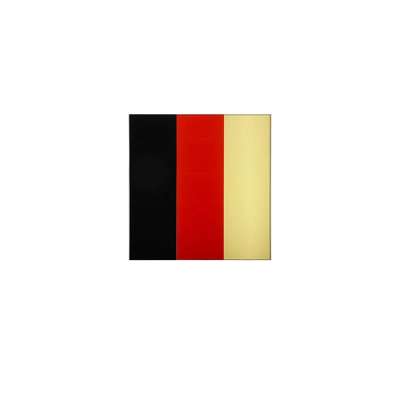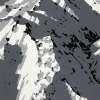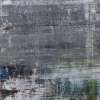Black,
Red, Gold
Gerhard Richter's Black, Red, Gold collection, buzzing with an alertness to the need to imbue hope with memory, features two prints reworking Richter's seminal sculpture. The 204-meter sculpture cast in glass and enamel, homages the German flag and was commissioned by Norman Foster to accompany the Reichstag's monumental redevelopment.
Gerhard Richter Black, Red, Gold For sale
Black, Red, Gold Market value
Auction Results
| Artwork | Auction Date | Auction House | Return to Seller | Hammer Price | Buyer Paid |
|---|---|---|---|---|---|
 Schwarz Rot Gold IV Gerhard Richter Signed Print | 5 Jun 2025 | Van Ham Fine Art Auctions | £10,625 | £12,500 | £18,000 |
 Schwarz Rot Gold I Gerhard Richter Signed Mixed Media | 1 Dec 2023 | Grisebach | £11,050 | £13,000 | £17,000 |
Sell Your Art
with Us
with Us
Join Our Network of Collectors. Buy, Sell and Track Demand
Meaning & Analysis
Gerhard Richter is perhaps the most prominent German artist of the 20th and 21st century. Able to transition between a precise, photographic level of representation on the one hand, and a looser, more abstract approach on the other, Richter’s unconventional art defies simple categorisation. Commenting on his anti-establishment attitudes towards art history, and his own painterly style, Richter once commented: ‘it was the only way to get rid of this heavy tradition […] to make new things that are more interesting’. An extension of his deconstructive approach, the Black, Red, Gold collection is concerned with a key work in Richter’s oeuvre, entitled Schwarz, Rot, Gold (Black, Red, Gold) (1999). A 204-meter sculpture cast in glass and enamel, it is an ode to the three colours of the German flag: black, red, and gold.
Schwarz Rot Gold 1 (1998) and Shwarz Rot Gold IV (2015) are associated studies for the site-specific sculptural work, a symbol of German Vergangenheitsbewältigung – or ‘working through the past’ – that now hangs in the Reichstag (German Parliament) in Berlin. Commissioned to accompany the Reichstag’s pioneering redevelopment by world-famous architect Norman Foster in 1999, the artwork is a imbued with a sense of national optimism, brought forward by German reunification in 1991. Hanging in a building whose burning in 1933 actively enabled the Nazi seizure of power, the work’s simple-yet-effective qualities are manifest in these prints. Eliding the iconography of the German flag with the emotional qualities of colour, these works are endowed with a sense of transcendence and historical importance.
Richter is no stranger to the themes of historical remembrance and reflection: countless examples of his work tackle these themes head-on. The 1988 series 18. Oktober 1977, for example, deals explicitly with the traumatic legacy of the infamous Rote Armee Fraktion (Red Army Faction) - commonly known as the Baader-Minehof Gang - a terrorist group active in West Germany during the ‘70s, ‘80s, and ‘90s.









